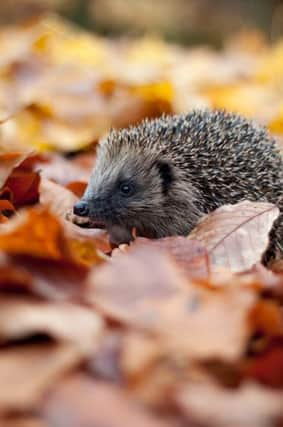LIANNE DE MELLO; Make your garden more wildlife friendly to save hedgehogs


With a little help and advice, you can make it easier for them to survive and thrive.
The hedgehog – the only UK mammal with spines – is one of the UK’s most easily recognised species.
Advertisement
Hide AdAdvertisement
Hide AdDespite their popularity, reports have shown hedgehogs are in decline with as much as 30 per cent of the population disappearing in just 10 years.
We at the Wildlife Trust know there are various factors contributing to their decline, such as habitat loss, poor management of countryside hedgerows, housing and road development and, of course, traffic.
Small tidy gardens with fences that prevent hedgehogs moving through their territory diminish their habitat significantly.
Badgers are also cited as a concern as they are one of the hedgehog’s predators.
Advertisement
Hide AdAdvertisement
Hide AdHowever, research has shown that hedgehog populations have been lost even where there are relatively few badgers, so it’s believed that there are a wider range of reasons for their decline.
Hedgehogs can be found on grassland, scrub, hedgerows, woodland, parks and gardens.
They enjoy moist grassy areas for foraging and low shrub cover with nesting materials like broad leaves and dried grass for daytime cover.
Hedgehogs will travel up to two miles in one night in search of food, which means the hedgehog you see in your garden may be one of several on its nightly rounds. This is why it is vital for the gardens in your area to be accessible to hedgehogs.
Advertisement
Hide AdAdvertisement
Hide AdBy banding together with your neighbours, you can create a network of paths, simply by agreeing to cut small holes in the fences between your gardens.
Hedgehogs are considered the gardener’s friend for their supposed appetite for slugs and snails, but these actually make up a very small part of their diet – about five per cent.
Beetles, grubs and earthworms make up a large proportion of what they eat, and they can get through 100 or more invertebrates a night.
There are a few other simple ways to make your garden more attractive to hedgehogs.
Advertisement
Hide AdAdvertisement
Hide AdTry making a log or leaf pile, letting grass grow a little wilder to create a good habitat for prey species, and being less tidy in the garden, leaving plenty of fallen leaves in autumn for their nesting material.
Find out more about making your garden wildlife friendly at hiwwt.org.uk.
Lianne De Mello is from Hampshire and Isle of Wight Wildlife Fund